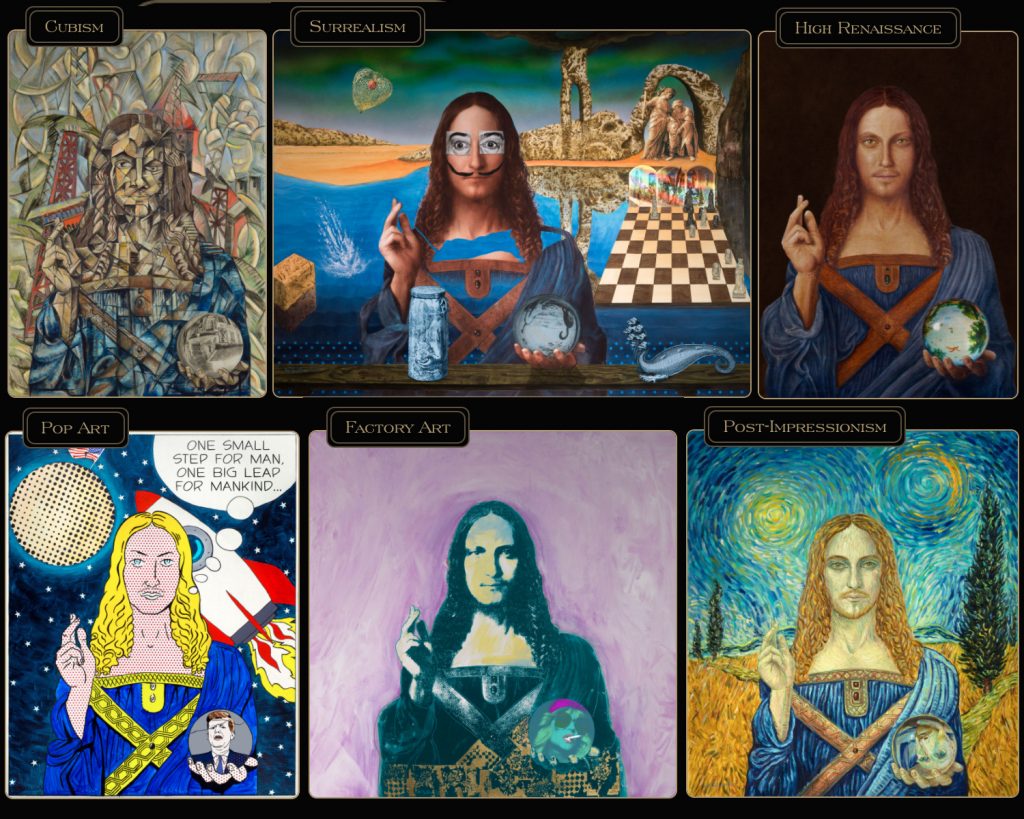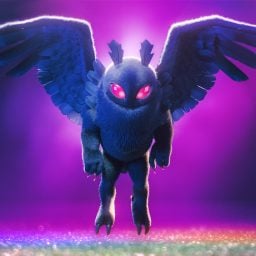In January 2021, a long-germinating NFT project titled Hashmasks officially launched. The series of 16,384 unique collectible NFTs was the first meaningful follow-up building on the success of Larva Labs’ CryptoPunks. These NFT series have since bred quicker than a virus—computer or otherwise.
Several elements distinguish the Hashmasks from other NFTs. Each came with a Name-Changing Token so each holder could rechristen the NFT and personalize the ownership experience (like buying and renaming a Leonardo sketchbook after yourself …sort of). The tokens also accumulate every day for each holder, totaling about 3,600 per year.
In addition, each Hashmask was imbued with transferrable copyright, another first, which entitled each owner to do what they wished with their NFT image, from selling merch to anything else they might conceive. (This element may not have amounted to much as of yet, but it’s something the not-very-punk Punks specifically disallow.)
In short order, the Hashmasks sold out for about $16 million and have since traded for over $90 million. I can see the joke popping up in a Richard Prince painting: What do you get when you cross a Punk with a Hashmask? A Bored Ape! Ugh, sometimes I miss the art world of yore (i.e. a year ago).
What I can reveal today is that Suum Cuique Labs, an LLC based in Zug, Switzerland (aka Switzerland’s Crypto Valley) and founded by Hashmasks creators Gautham Nekkanti and Hansen Wang—who roll with no email and zero social media presence (how they do that is beyond me, obviously)—are also the masterminds behind a new NFT project: The Greats. The project has in recent days been attributed to the notorious art forger Wolfgang Beltracchi by Forbes and other press outlets (including Artnet News).
Rather than the creator of this project, Beltracchi is in fact no more than a hired gun collaborator, hand-picked by Wang and Nekkanti to carry out the execution of their conceptual conceit. The works will be sold beginning October 18 in what is known as a Dutch Auction (a common tactic in NFT market), beginning at 10,000 ETH with a floor of approximately 3–5 ETH. (In a Dutch Auction, the price of an item is lowered until it gets a bid, and then all the buyers end up paying an amount equal to the lowest offer; if you bid more than the final price, you get a refund. Existing Hashmask holders also get a 1 ETH discount on The Greats, another common NFT gambit.)
Call it a great quasi-hoax they perpetuated with Beltracchi as the frontman. After I gave a recent keynote speech at a conference in Zug, Hansen Wang was literally lying in wait for me like a deer stalker and shooed away other attendees that wanted to say hello (yes, it actually happens). Hansen had been sent a previous Artnet column I wrote mentioning his upcoming project in only the vaguest terms (as that was all I could squeeze out of my source at the time). We began an ongoing relationship culminating in the most personal (and only!) interview he’s ever given.
What was your childhood like and where?
My childhood was quite easy and without much complications socially or otherwise. My parents grew up in China during the cultural revolution and came to Berlin one year before the Berlin Wall fell [in 1989]. I came to this world two years later, in 1991. When I was very young, I would sometimes wish that I was more similar to the other kids and that my mum would cook the same food my friends’ parents cooked, but now I am very glad that I grew up with both Chinese and German influences.
What were your earliest interests?
Like many other kids I did sports and played an instrument (in my case, piano) from early on. Otherwise, I was just interested in the same things all kids are interested in. Nothing that stood out.
Where did you go to school?
I went to a school in Germany until I was 15. I then finished my high school in Arizona and did my bachelor’s and master’s degrees in economics in London. But to be honest, school was never so interesting for me. I think I attended a total of maybe 25 classes during my entire bachelor’s. I chose economics because it seemed to provide options in the job market, but in retrospect I understood that I really was not passionate about it at all. That is the safe way that many children of Asian descent chose. I would definitely do it differently if I could.
What was your career before NFTism?
I started my career in 2015 in a Swiss multi-family office, making investments for wealthy families. There I met my old boss Mona, who got me into crypto. I joined her full time and I have been working in crypto/finance since 2017, which is quite long given that Ethereum only came into existence in 2015. I fit better into a less official, less corporate setting. I think so at least—I’ve never really been in a company bigger than 25 people.
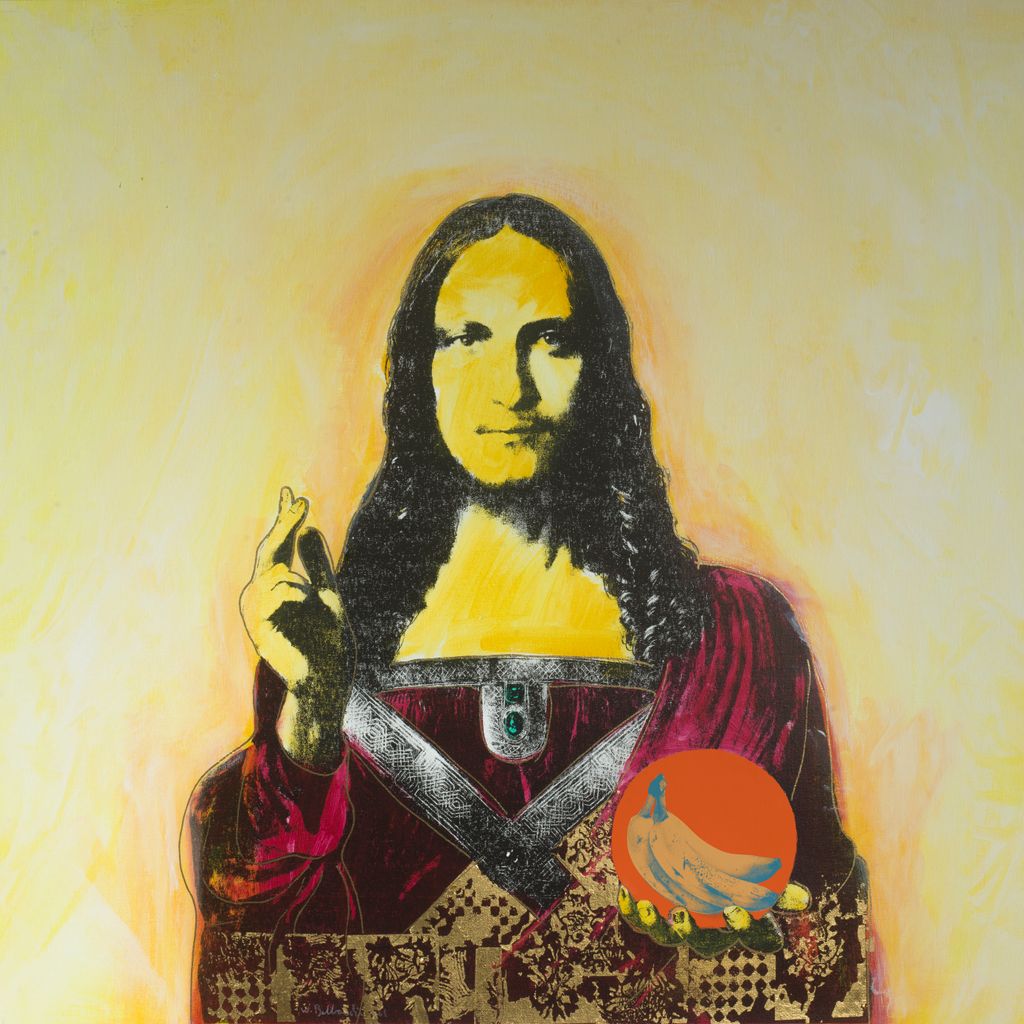
One of the Greats.
What is NFTism in your estimation?
NFT is just the technical word for the underlying way digital art is stored, traded, and moved, which is now commonly used to simply describe digital art, though digital art existed way before Ethereum came about.
I understand NFTism as the current culture around NFTs. It is far more exciting than just the images you see on the screen. When it comes to NFTs, the image is just one part of the art, but everything else around it—such as the sales mechanism, the performance art in the marketing, or the community—play a much more important role than in traditional art.
I’ll give you an example. For the launch of the current project, where we are recreating the Jesus painting (Salvator Mundi), we wanted the introduction of the project to be an artwork in itself. On the evening of September 28, 2021 at around 8 p.m. Swiss time, we spent $1.1 million on three Crypto Punks and “named” them after the Three Wise Men, Caspar, Melchior, and Balthasar (there are different ways to spell the names, but we had to go for these, because others were taken on ENS).
Then we entered the CryptoPunks Discord Channel, the most important NFT community, and announced that we are up to something. And once we reveal that the art concept revolves around the recreation of Jesus, it will seem so obvious that it must have been the Three Wise Kings who brought the news of Jesus’s arrival. Now that is cool.
What are Hashmasks? How did it come about?
Hashmasks was our first art project. We wanted to create a new kind of collectible. A collectible where the value hierarchy was not determined solely at the creators’ discretion. We wanted the community to be an active part of the decision-making process, which is why we added many hidden traits and also allowed the user to choose one of the most important traits: the name. We worked on the Hashmasks for almost eight months and launched it quietly from our own website in the end of January 2021 without any advertisements, marketing, or partners. After four days, all 16,384 Hashmasks sold without a single buyer knowing what they actually bought.
How did we come up with Hashmasks? I was a passionate collector of CryptoPunks. One day, I called my old friend and we decided that we would develop our own collection that is more sophisticated than the 24 x 24-pixel images that were the punks. He is a developer and I am not. He handled the entire technical part of our NFT project. It was the funnest time to work on Hashmasks. It was just the two of us—no rules, no legal, just two guys meeting after work every single day on Zoom. Funny detail: My partner and I did not meet a single time during the eight months we worked on Hashmasks, we only met several weeks after it was over.
Why are Hashmasks special?
We were a big part of what started this whole NFT craze this year with our launch in January 2021. The Punks and many other projects came before us, but we brought in the Defi (Decentralized Finance) crowd—and with them also the mainstream—many of whom were doubtful of the application of blockchains for art at first.
Our method as well as our smart contracts were copied and used as inspiration by many NFT projects. We were also the first to give full commercial rights to users allowing them to fully capture any extra value created without ever having to share the profit or even ask us for permission—a new way to use art.
What on earth is Hashmasks .Church?
This is funny. So, there is one dot on several portraits amongst all the Hashmasks. Since we put in so many hidden messages and riddles, people were speculating whether there was a special meaning behind the mysterious dot and formed a church in Discord around it to investigate. Was it intentional or just an innocent mistake by one of the artists? I guess we will never know…
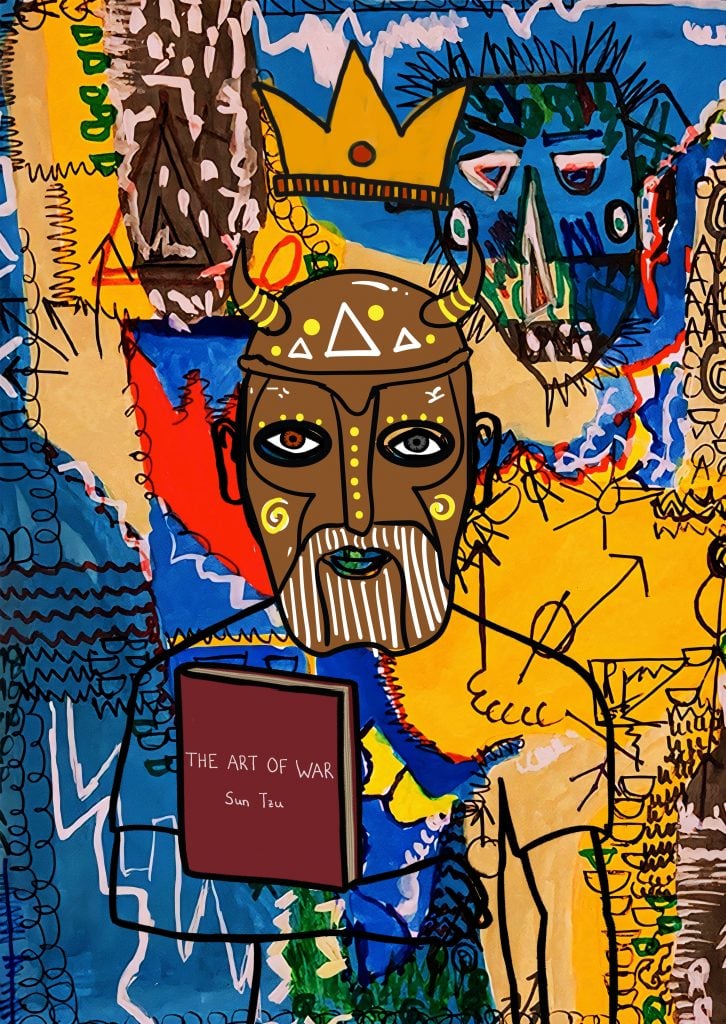
One of the Hashmaks. Courtesy of Hashmasks.
How did you find the artists that contributed art? Were there 74? Why didn’t they get credit? What did they get?
In total, we have worked with between 75 and 80 different artists and graphic designers. My partner and I created the art concept and each artist contributed a small portion to the overall collection.
[Wang pulls from a medium post on Hashmasks]: Once we had an early concept ready, we gave the mandate of producing all the individual components to the artists. We sourced the artists from our network, external platforms like Upwork or Fiverr, and via social media. Each artist was given a specific task. Some only drew masks, some drew backgrounds, and others drew items. At this point, however, the final artwork was not yet fully fleshed out. For instance, it took more than eight different artists to finalize a male base character we were satisfied with.
Once all the pieces were produced, collected, and mapped out, the rigorous due diligence process began. Since only we had the whole picture, many works produced did not fit together and were not included in the final work.
Many of the pieces made needed small adjustments to fit perfectly; for example, since we had different base characters, many masks had to be adjusted or excluded since they had been designed with a single base in mind. Even finalized parts needed additional designers to generate variations, which helps explain why the art generation phase took over half a year. This process—the multitude of artists, the different components of each artwork, the dynamism, the lack of singular input for the finalized pieces—is why we believe Hashmasks represent a truly unique example of digital, decentralized art.
The artists were paid a wage based on their hours. Since every artist contributed a very small portion of the overall artwork, their relevance is rather small, so we did not see any need to credit them. Everyone is anonymous, including us.
Are you an artist? If not, what are you?
I do say I am an artist when people ask me what I do. An artist who has not enjoyed any formal education in the arts, does not have a deep understanding of art history, and, thus, is untouched by the influence of previous artists. In addition to that, both my partner and I come from a much more analytical and rational background, which ironically contradicts the pure creativity many artists rely on. And you can see this reflected in our creations, e.g. in the systematic approach of our rarity hierarchy for the Hashmasks, which took of dozens and dozens of iterations and changing variables.
Define art.
I’ve sat here in front of this question for over an hour now, and I cannot give you a good answer. I have always found it hard to answer this simple question.
What do you think of the art market?
Quite frankly, I do not know much about the art market. But I have always felt like the market is dominated by an exclusive few who “decide” what is and what is not art, and that is not good.
Would you buy a painting for $10 million? Why or why not?
The answer depends on my circumstances. Currently, I would not spend $10 million—a substantial part of my net worth—on an art piece, regardless of how much it speaks to me. If I was a billionaire, I probably would buy a painting for that price if I really liked it.
Generally, I prefer to buy art from people I know or whose story behind the painting I know. Once they tell me the story of their painting, I usually like it 60 percent more. Especially for photography.
What is next NFT-wise?
I really don’t know! I don’t monitor the market that much anymore; I am too absorbed working on our own NFTs with my team.
What do you think of Wolfgang Beltracchi? Is he a thief? An artist? A conceptualist?
Above all, I see Wolfgang as one of the most skilled and most knowledgeable artists in the world. Only through decades of painting and a very complete understanding of the techniques and history of different artists can he do what he does: create paintings in the style of renowned artists in a realistic enough way to convince “art experts.” It is probably not that difficult to fool me or other non-experts, but to understand and imitate another artist with such precision that even the specialists believe it is impressive.
I understand why the art market is upset with him. He was able to fool so many. And precisely for the reason that many art experts despise him, many non-art people love him: He went against the mysterious art elitists and questioned their expertise.
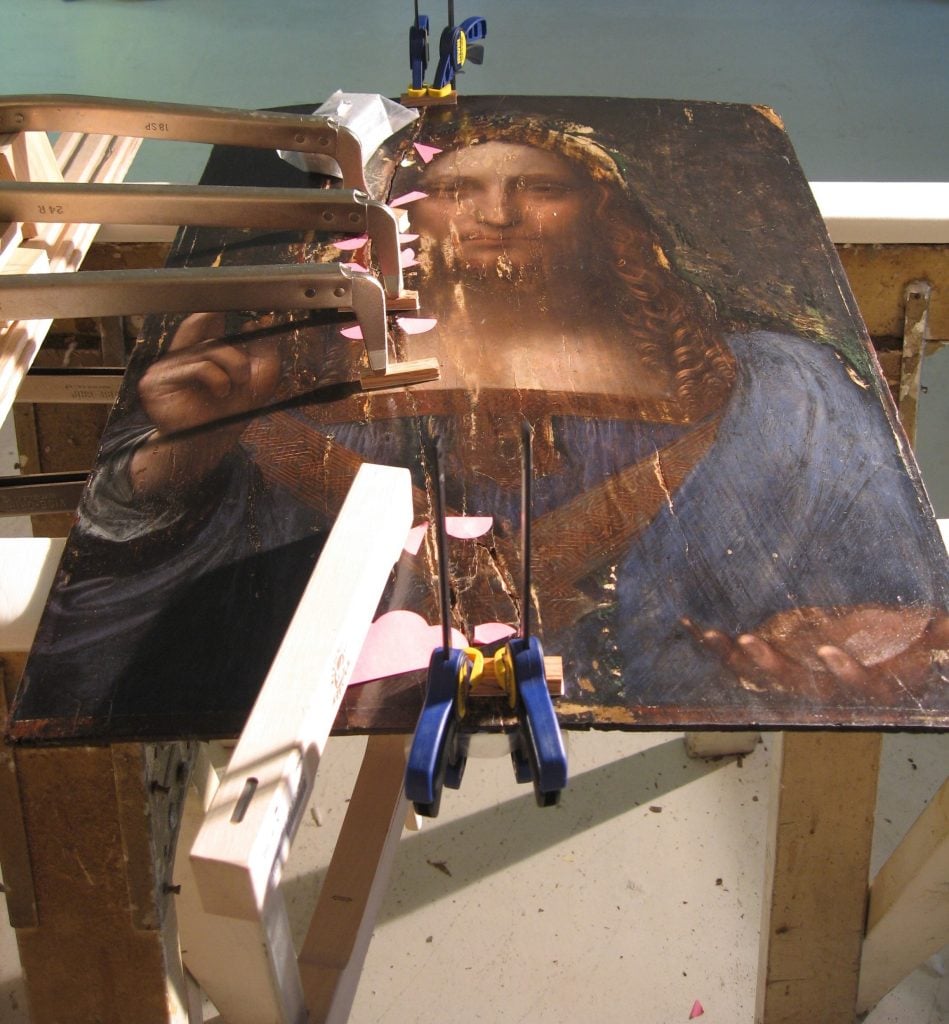
Restoring the crack on Salvator Mundi in 2006 as seen in The Lost Leonardo (2021), film still. Photo by Robert Simon, courtesy of Sony Pictures Classics.
What do you think of the Salvator Mundi painting? Is it real? Does it matter? What about the notion of a painting selling for $450 million? Is that a good thing? Bad? Does it matter?
We chose the Salvator Mundi due to its controversy. It is definitely possible that the painting is not or not fully painted by Leonardo based on the way that people worked during the High Renaissance and the inherent difficulty of accurately determining the authenticity of a very old painting. It was also restored by this woman [Dianne Modestini], so in actuality a big proportion of the painting is painted by… her.
I don’t think it is bad even if the painting is not fully created by Leonardo. It still captures how art was created at that time. And it looks nice. It just shouldn’t be called a full Leonardo, which would massively lower the price.
Would you buy a canvas for $450 million?
If I had $4.5 billion 😉
What do you think of the appropriation art of Richard Prince?
I wasn’t familiar with him, so I had to google him and read up. Based on my five-minute research, I am not a big fan of his appropriation art. I think I might not understand enough about art to appreciate this kind of art. I can imagine that his work will seem more relevant and significant if you understand the historical context.
How did you involve your parents in your latest project?
As you know, we are recreating paintings of the Salvator Mundi in the style of different artists. For pop art, we have speaking bubbles in different languages. For [the] Chinese [version], we needed some Chinese experts. So I flew my parents over here to spend a couple of days with us to select and prepare templates for Wolfgang of all the Chinese quotes in the speaking bubbles.
I hear you are going to start a smart contract company, what else is in cards for future? When?
We are not starting a different company. In fact, we are not really a company now either. We simply got together a group of experts in their respective fields (a highly skilled artist, expert graphic designers and photographers, NFT specialists, front end and back end programmers, lawyers, etc.) and we are working together to release an art concept that we can be proud of.
We don’t use email, we have no calendars, no working hours, no holiday schedule, no managers. Everyone is here, because they want to be and they are really good at one thing. So, there is no need to manage anyone. I learn a lot from the guys I work with. It truly is a privilege to work like this. I understand that such a model is not scalable, but I want to continue to work in a very small team of dedicated individuals. I am not interested to run a “traditional” company. I think the way that we work suits me anyway more.
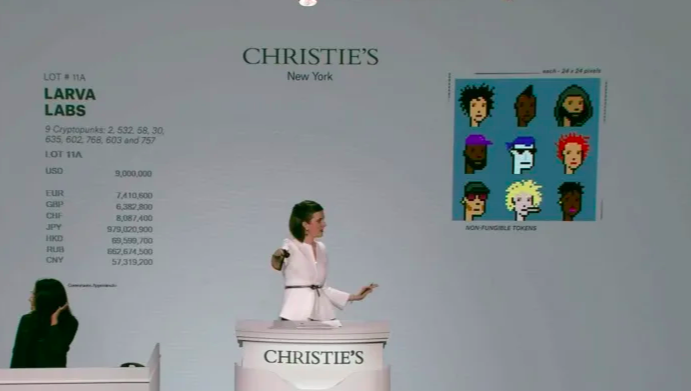
The sales room during bidding on the series of cryptopunks. Photo courtesy Christie’s.
Do you collect NFTs? What are a few things in your collection? Why don’t you own any of mine?
I only ever collected two NFTs: Cryptopunks and Hashmasks. To date, I have not sold a single Hashmask, I have only given away some to friends and people who helped. I would definitely want to collect more, but unfortunately, I do not have much time to do my research. I only want to get an NFT that – like Hashmasks – brings some sort of innovation to the industry. NFTs are such a new phenomenon and there is lots of room for innovation. I cannot wait to finish this project and have a bit of time to dive into the NFT world again to see what everyone has been working on.
What do you think of artblocks.io? Profile picture collections? NFTs gaining access to “clubs”?
I like the work that pioneers in their fields did, but I am not a fan of all the copycats. Artblocks were amongst the first to streamline on-chain generated art, so the concept was very exciting at first, but after a while the projects became fairly similar and I lost interest. Same with most profile picture collections. I know that most profile picture collections were incepted by two or three guys, who saw an opportunity to make quick money in this nascent industry, and brought a product to market in a few weeks without much effort or thought put behind it. I don’t want to own something like this.
I want to own art where the creators put a lot of thought and effort in it. Ideally also passion. The intrinsic motivation behind the creation is important to me and that motivation is often money in the current NFT market, which is why I am rather careful to follow a new project. I want something that the creator truly believes in himself, it is usually contagious.
What are your ideas of success? What are your expectations of your latest project?
We had one goal in place when we started “The Greats” collection. We wanted to deliver a product that has a unique art concept and was not replicable by others. In addition, we wanted to capture the ethos of our current time in our artwork, so that people in the year 2100 can look at their painting by us (even print it out and hang it on the wall) and know “This is how living in 2021 felt like, this is how the people talked and this is what they were interested in.”
I believe we already achieved this. In my head we are already successful. And I know that people will like it, too, if we can communicate how many facets “The Greats” has. So much attention to detail, so many little Easter eggs, so much of our own personalities and collectors like that. They can dissect our art like students dissect poems.
What if they don’t fly?
It would be disappointing, but it would not create too much doubt in us. If people don’t like it, it will be a reflection of our inability to convey our message, not how we executed it. We know what we have put into this. We know the attention to detail in both the art by Wolfgang and the entire application by us.
What, if anything, do you fear?
I wouldn’t say fear, but right now I am quite excited and nervous about the launch. It is always a nerve wrecking thing to launch a blockchain application: You are writing code that contains money, you are speaking to thousands of people via Discord, you have many people going through your contracts checking for exploits and bugs, etc. I hope all goes well. We have taken all measures to ensure the smoothest experience of digital art, though, so I hope you enjoy it.
What’s your favorite color?
Green. I like all colors equally, but my mum’s favorite color is green, so I just adapted it out of solidarity.
How did you devise strategy (and what was it) that proved so successful with Hashmasks?
I would attribute the success of Hashmasks to several factors:
1. The timing was perfect. We have been working on it for almost 8 months in silence. Right before our launch in January 2021, the NFT market started to heat up and get attention from the wider crypto audience, e.g. the first alien punk was bought by FlamingoDAO for 660 ETH, a record at that time. The market was ready for a new art project and we were there to give it to them.
2. We knew our target audience better than anyone. We were our target audience. We were active collectors of Cryptopunks, we would spend our free time on twitter and in the Discord channels and converse with other collectors, speak the same language, use the same phrases, converge in our humor. So, when it came to making decisions in the design of the artwork, we could trust our instincts to include features that we thought the target audience would like. I‘ll give you an example: Some of the Hashmasks are holding books. We specifically chose books that we thought that our target audience might have enjoyed reading when they were younger. If you look at an artwork and the person in the image holds a book that you read as a kid, it will evoke positive emotions and a feeling of connectivity.
3. Bringing small, but clear innovation. Most projects nowadays just copy what their predecessors have done before. It was important to us to stand out. That is why we introduced two new concepts: (1) allowing people to name their artwork on-chain and creating a market for names and (2) giving them full commercial rights. Two small steps for Hashmasks, two big steps for NFTs J Official website: https://www.greats.art
